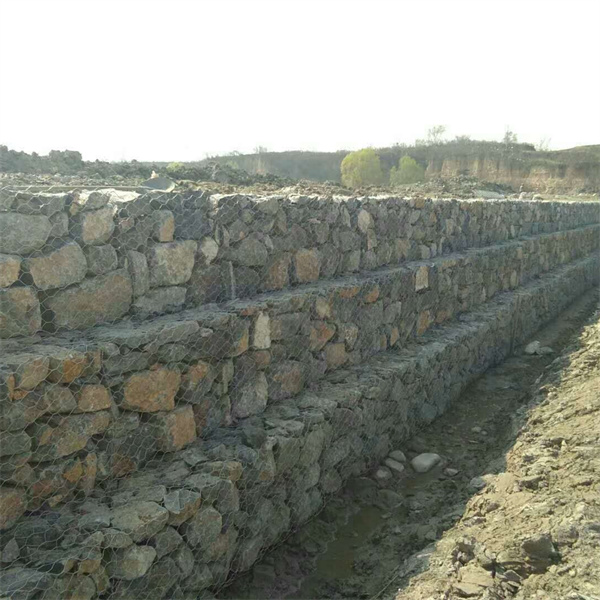ធ្នូ . 06, 2024 05:53 Back to list
Gabion Retaining Wall Design Guidelines and Specifications for Optimal Performance and Durability
Gabion Retaining Wall Specifications
A gabion retaining wall is an effective and environmentally friendly solution for soil retention, erosion control, and landscape design. Constructed from wire mesh baskets filled with rocks or other materials, gabion walls are widely adopted in civil engineering projects due to their durability, flexibility, and aesthetic appeal. This article provides an overview of the specifications, benefits, and considerations for constructing a gabion retaining wall.
Design Specifications
Material Selection
The key components of a gabion retaining wall include the wire mesh, the filler material, and the foundation.
1. Wire Mesh The wire mesh used for gabion baskets is typically made of galvanized steel or PVC-coated wire to enhance rust resistance and longevity. The mesh size should be small enough to contain the filler material securely while allowing water to drain freely. A commonly used mesh gauge is between 8 to 10 gauge (approximately 4.0 to 3.3 mm).
2. Filler Material The filler material can be a range of rocks or stones, which must be durable and able to withstand various weather conditions. Common choices include granite, limestone, or river rock, with sizes usually ranging from 4 to 12 inches (about 10 to 30 cm). The material should be free of fine particles and organic matter to prevent erosion within the gabion structure.
3. Foundation A solid foundation is critical in the construction of a gabion retaining wall. The base should be excavated to create a stable bed, and a gravel or concrete footing can be used to enhance stability. The depth of the excavated area typically varies from 6 to 12 inches (about 15 to 30 cm), depending on the wall's height and loading conditions.
Dimensions
Gabion walls can be designed in various dimensions depending on the project requirements. The standard size for gabion baskets is 3 feet long, 2 feet wide, and 1 foot high (approximately 0.9 m x 0.6 m x 0.3 m). However, custom sizes can be fabricated to fit specific needs. For stability, the wall height should not exceed four times its base width, and it is essential to consider the wall's overall slope to manage hydrostatic pressure effectively.
Benefits of Gabion Walls
Gabion retaining walls offer several advantages
1. Erosion Control The porous nature of gabions allows water to flow through, reducing the pressure behind the wall and minimizing the risk of soil erosion.
gabion retaining wall specifications factory

2. Flexibility The modular design of gabion structures allows for easy adaptation in size and shape, making them suitable for various landscapes and designs.
3. Aesthetic Appeal Gabions can be filled with different types of stones, providing a natural look that blends well with the surrounding environment.
4. Cost-Effectiveness Compared to traditional retaining walls made from concrete or stone, gabion walls can be more affordable, especially when locally sourced materials are used.
5. Sustainability Gabion walls promote natural drainage and can accommodate plant growth, enhancing biodiversity and contributing to environmental sustainability.
Considerations
When planning a gabion retaining wall, several important considerations should be taken into account
1. Local Regulations Check with local authorities regarding building permits, zoning laws, and any regulations relevant to retaining walls.
2. Engineering Analysis Conduct a proper engineering analysis to evaluate soil conditions, drainage requirements, and potential load scenarios to ensure structural integrity.
3. Installation Proper installation techniques are critical to the wall's success. Ensure that the wire mesh is securely fastened, and the filler is compacted adequately to enhance stability.
4. Maintenance Though they require less maintenance than traditional walls, gabion structures should still be inspected periodically for structural integrity, vegetation growth, and drain blockages.
Conclusion
Gabion retaining walls represent a robust and visually appealing solution for soil stabilization, erosion control, and landscape enhancement. With thoughtful design specifications and appropriate materials, these structures not only meet functional requirements but also contribute positively to the environment. Proper planning, execution, and maintenance are essential to maximizing the advantages of gabion walls, ensuring they remain a reliable feature in civil engineering and landscaping for years to come.
-
HESCO Gabion Baskets for Coastal Erosion Prevention
NewsAug.22,2025
-
Longevity and Durability of River Rock Gabion Walls
NewsAug.22,2025
-
How to Integrate Gabion 3D Walls in Urban Planning
NewsAug.22,2025
-
Reno Mattress Gabion Applications in Civil Engineering
NewsAug.22,2025
-
How to Install Wire Mesh for Gabion Baskets Properly
NewsAug.22,2025
-
Best Materials for Filling a Chain Link Gabion
NewsAug.22,2025
-
Wire Mesh Thickness Impact on Gabion Wall Load Bearing
NewsAug.12,2025






